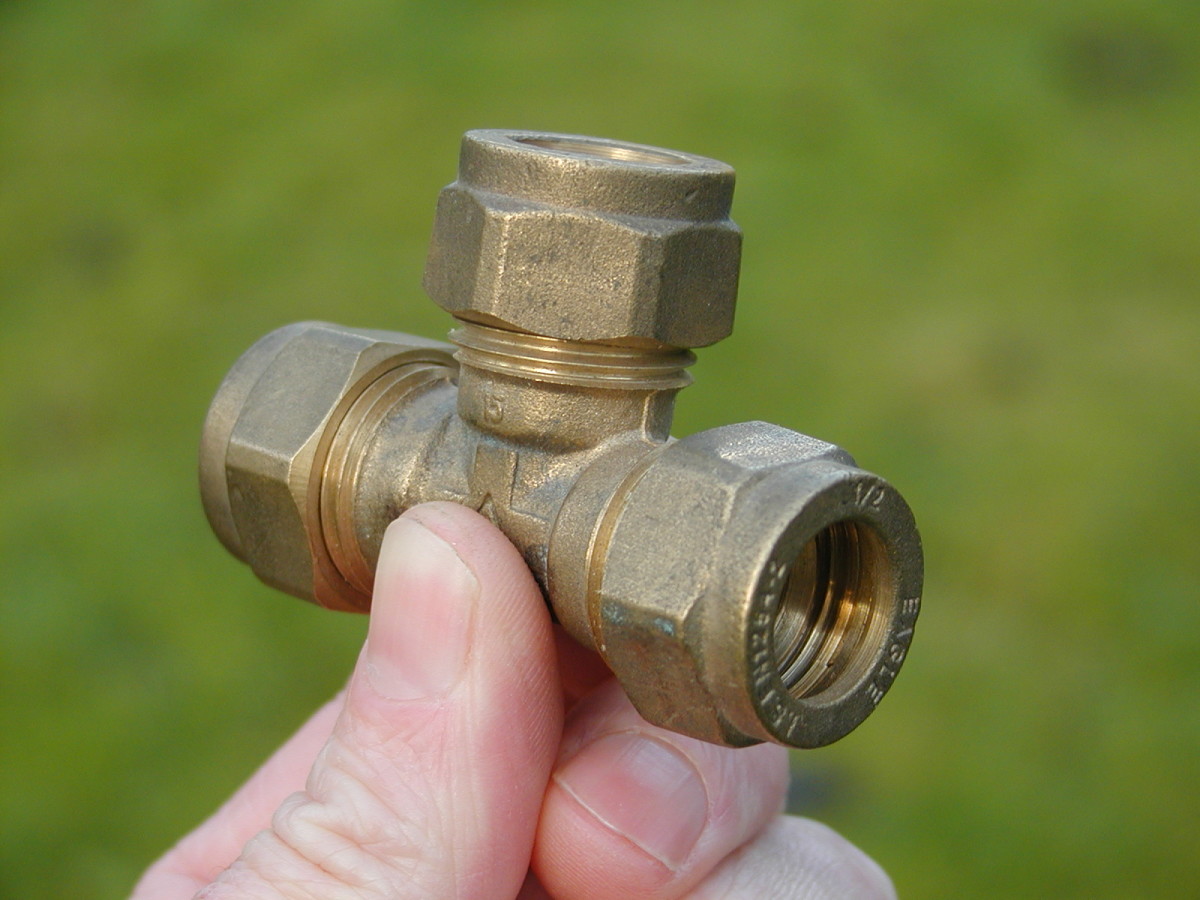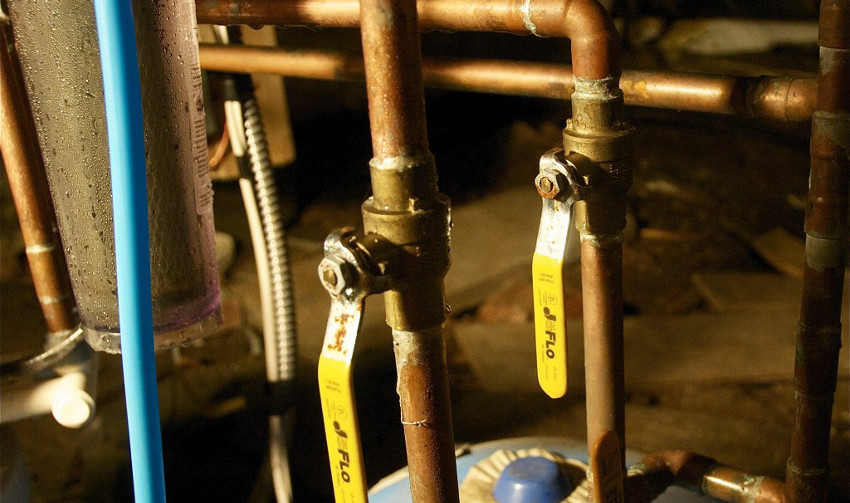Noisy Plumbing Issues SOLVED!
Noisy Plumbing Issues SOLVED!
Blog Article
Have you been searching for information and facts concerning Why Do My Plumbing Pipes Make A Knocking Noise?

To detect loud plumbing, it is necessary to establish first whether the unwanted sounds happen on the system's inlet side-in other words, when water is turned on-or on the drainpipe side. Sounds on the inlet side have actually differed reasons: excessive water pressure, worn valve and faucet parts, incorrectly linked pumps or other home appliances, improperly put pipeline bolts, as well as plumbing runs having way too many tight bends or various other constraints. Sounds on the drainpipe side normally come from bad place or, just like some inlet side noise, a layout containing tight bends.
Hissing
Hissing sound that takes place when a tap is opened somewhat typically signals extreme water pressure. Consult your local public utility if you believe this trouble; it will certainly be able to tell you the water pressure in your location and also can set up a pressurereducing valve on the incoming water supply pipe if essential.
Thudding
Thudding sound, commonly accompanied by shuddering pipelines, when a tap or home appliance shutoff is shut off is a condition called water hammer. The sound as well as vibration are caused by the resounding wave of stress in the water, which all of a sudden has no place to go. Often opening a valve that discharges water quickly right into an area of piping consisting of a restriction, elbow, or tee installation can create the exact same problem.
Water hammer can generally be treated by installing installations called air chambers or shock absorbers in the plumbing to which the trouble valves or faucets are connected. These tools enable the shock wave developed by the halted circulation of water to dissipate in the air they have, which (unlike water) is compressible.
Older plumbing systems may have brief vertical areas of capped pipe behind walls on tap competes the same function; these can eventually loaded with water, lowering or ruining their performance. The cure is to drain pipes the water system entirely by shutting off the primary water supply valve and also opening all taps. Then open the major supply shutoff as well as close the taps one at a time, beginning with the tap nearest the valve and also ending with the one farthest away.
Chattering or Shrilling
Intense chattering or shrilling that happens when a valve or tap is turned on, which typically goes away when the fitting is opened totally, signals loose or malfunctioning interior components. The service is to change the valve or faucet with a brand-new one.
Pumps as well as appliances such as cleaning machines as well as dishwashers can transfer electric motor noise to pipelines if they are improperly attached. Link such products to plumbing with plastic or rubber hoses-never rigid pipe-to isolate them.
Other Inlet Side Noises
Squeaking, squeaking, scraping, breaking, and tapping generally are caused by the growth or tightening of pipes, normally copper ones supplying hot water. The audios occur as the pipelines slide against loosened fasteners or strike neighboring home framework. You can frequently identify the area of the problem if the pipes are subjected; just follow the sound when the pipelines are making noise. More than likely you will uncover a loosened pipe hanger or a location where pipes lie so near flooring joists or other framing pieces that they clatter versus them. Affixing foam pipeline insulation around the pipelines at the point of get in touch with need to fix the trouble. Be sure bands and hangers are safe and secure as well as offer appropriate assistance. Where possible, pipe bolts need to be connected to substantial structural aspects such as structure wall surfaces instead of to framing; doing so minimizes the transmission of resonances from plumbing to surfaces that can enhance and also move them. If attaching fasteners to framing is inescapable, wrap pipelines with insulation or other durable product where they contact fasteners, and also sandwich the ends of brand-new bolts between rubber washing machines when installing them.
Fixing plumbing runs that deal with flow-restricting tight or various bends is a last resource that needs to be undertaken only after seeking advice from a proficient plumbing service provider. However, this scenario is fairly typical in older homes that might not have been built with interior plumbing or that have actually seen numerous remodels, especially by novices.
Drainpipe Sound
On the drainpipe side of plumbing, the principal objectives are to get rid of surface areas that can be struck by dropping or rushing water and to protect pipes to consist of inevitable audios.
In brand-new construction, bathtubs, shower stalls, toilets, and wallmounted sinks and basins ought to be set on or versus durable underlayments to lower the transmission of audio via them. Water-saving toilets and also taps are much less loud than standard models; install them instead of older kinds even if codes in your location still permit using older fixtures.
Drainpipes that do not run vertically to the basement or that branch into horizontal pipe runs supported at floor joists or other framing present especially bothersome noise problems. Such pipes are large enough to radiate considerable resonance; they additionally lug substantial quantities of water, that makes the circumstance worse. In new construction, specify cast-iron soil pipelines (the huge pipelines that drain toilets) if you can afford them. Their massiveness contains a lot of the sound made by water going through them. Likewise, avoid routing drainpipes in wall surfaces shown bed rooms and rooms where individuals collect. Walls consisting of drainpipes should be soundproofed as was defined earlier, making use of dual panels of sound-insulating fiberboard and also wallboard. Pipelines themselves can be wrapped with unique fiberglass insulation created the function; such pipes have a resistant vinyl skin (sometimes having lead). Results are not constantly satisfactory.
If Your Plumbing is Making These Sounds, There’s a Problem
A Bang or Thump When You Turn Off a Faucet
If a loud bang or thump greets you each time your turn off running water, you likely have a water hammer. A water hammer occurs when the water velocity is brought to a halt, sending a shock wave through the pipe. It can be pretty jarring — even worse, damaging to your plumbing system. All that thudding could loosen connections.
Strange Toilet Noises
You’re so familiar with the sounds your toilet makes that your ears will be attuned to anything out of the ordinary. Fortunately, most unusual toilet noises can be narrowed down to just one of several problems.
Foghorn sound:
Open the toilet tank Flush the toilet When you hear the foghorn noise, lift the float to the top of the tank If you’re ambitious, you can remove the ballcock valve and disassemble it to replace the washer. Or you can more easily replace the ballcock valve entirely. This device is relatively inexpensive and available at most any hardware store.
Persistent hissing:
The hissing following a flush is the sound of the tank filling. It should stop once the tank is full. But if the hissing continues, it’s likely because water is leaking out of the tank. The rubber flap at the bottom of the tank can degrade, letting water slip through and into the bowl. That’s why the tank is refilling continuously. Fortunately, this is an easy fix:
Cut the water to the toilet by closing the shutoff valve on the water supply line. Flush the toilet to drain the tank. Disconnect the flapper Attach the new flapper Gurgling or bubbling:
Gurgling or bubbling suggests negative air pressure in the drain line, likely resulting from a clog. As air releases, it causes the water in the toilet to bubble. This could either be a minor issue or a major one, depending on the clog’s severity. Clogs can be caused by toilet paper or more stubborn obstructions such as tree roots. If you can’t work out the clog with a plunger, contact a professional plumber for assistance because a clog of this magnitude could lead to filthy and unsanitary sewage backups in your sink bathtub.

Do you like more info about Diagnose Unwanted Plumbing Noises? Put a review further down. We would be glad to find out your insights about this write up. We are looking forward that you come back again soon. If you please take a moment to promote this blog post if you appreciated it. Thanks a bunch for your time. Kindly come visit our blog back soon.
This Site Report this page